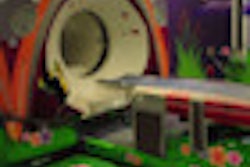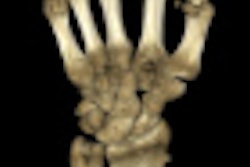Monday, November 29 | 11:00 a.m.-11:10 a.m. | SSC07-04 | Room S102D
Testing patients' renal function the same day they are scheduled for MRI or CT exams helps clinicians better manage contrast dose, according to researchers from the University of Rochester in Rochester, NY.Annie Napper and colleagues will present findings from their study that examined the benefit of determining a patient's creatinine/glomerular filtration rate (GFR) at the time of CT and MRI exams to better distinguish the amount of contrast to use, whether it be a full dose, a reduced dose, or even no contrast.
The study included 28 patients referred for CT or MRI who had had renal function tests on the day of their imaging exams because of outdated or missing renal laboratory results. Three radiologists reviewed each patient's medical history -- each of which had been made anonymous -- and made a contrast dose recommendation, according to Napper. Then the radiologists repeated the review, blinded to their original decisions and to the same-day renal function results, and made a new decision about contrast dose.
Same-day renal function results changed the contrast dose recommendation in 58% of the CT and 41% of the MR exams. As a result of the renal function data, patient care decisions were influenced in the following ways:
- In 20% of patients who would have been scanned without contrast, renal function results influenced the use of contrast at either reduced or full dose.
- Thirteen percent of patients received a full dose of contrast versus a reduced dose.
- Contrast was reduced or eliminated in 24% of patients who otherwise would have received a full dose.
When renal function information was available, the three reviewing radiologists' decisions about contrast dose for CT or MRI were in agreement 68% of the time; without the renal function information, their recommendations agreed 29% of the time.
Same-day renal function testing -- and radiologists' access to it -- improves patient safety and increases the diagnostic quality and accuracy of advanced imaging, Napper's team concluded.





















